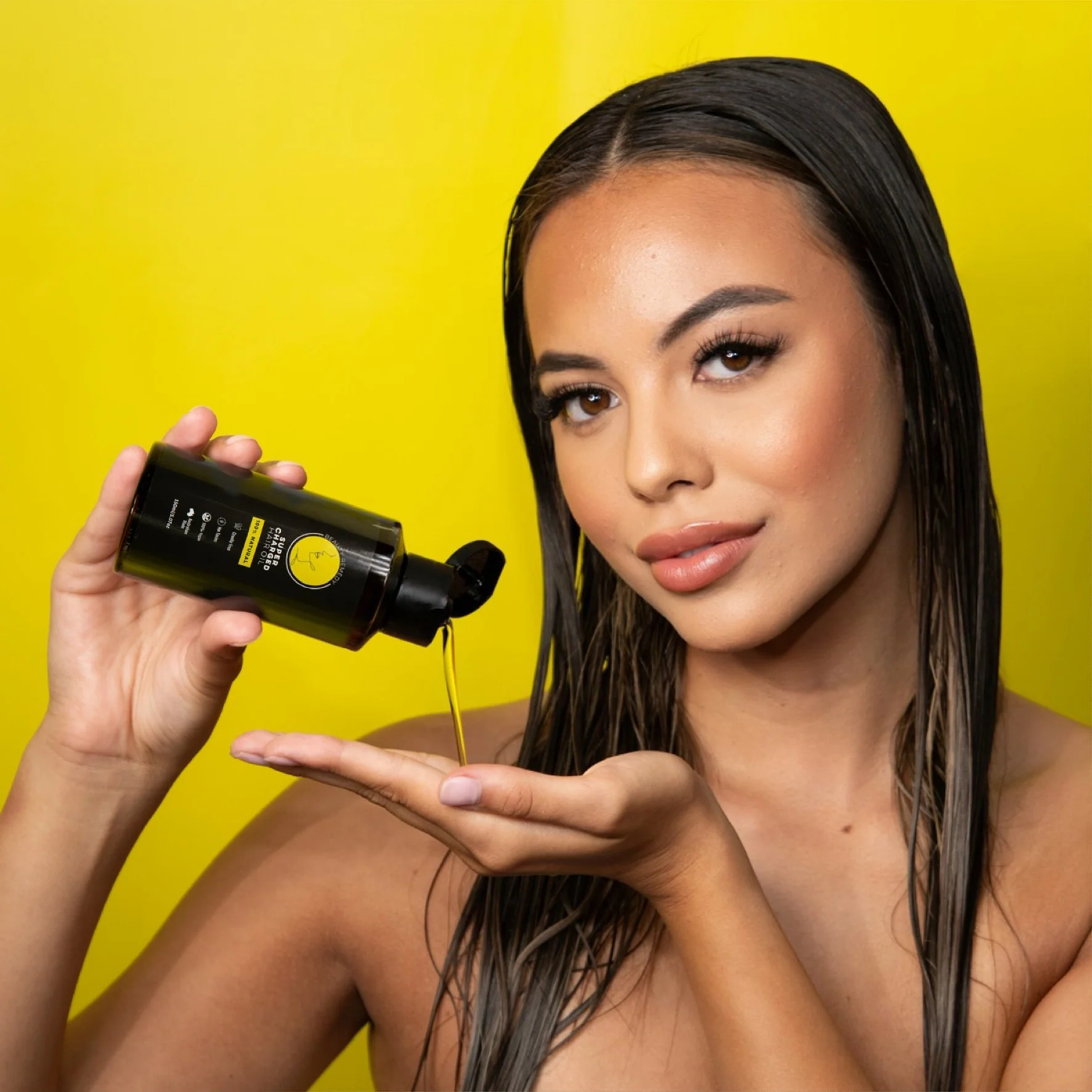
How to Make Hair Growth Oil
Unleash Lustrous Locks with Homemade Hair Growth Oil
Healthy hair starts at the roots. Stimulating scalp and follicles promotes optimal growth. DIY hair growth oils nourish from the inside out. How to make hair growth oil?These simple blends harness potent botanicals. They encourage lush, beautiful tresses.
Understand Hair’s Growth Cycle
Hair grows in three cycles – anagen, catagen, and telogen. The anagen phase fuels active growth from follicles. Catagen initiates a transition period. Telogen represents the resting phase.
Most hair remains in anagen for 2-7 years on average. Only about 10-15% rests in telogen at one time. Disruptions or deficiencies shorten anagen. This causes excess shedding.
Hair growth oils prolong the anagen phase. They provide nourishment for strong, lengthy growth periods. The right ingredients energize follicles and minimize excess fallout.
Pick a Nutrient-Rich Base
Choose a base rich in proteins, vitamins, and minerals. Options like coconut, olive, almond, and castor oils provide exceptional benefits.
Coconut oil’s fatty acids penetrate deeply into follicles. Its antimicrobial effects promote scalp health. It helps reduce protein loss and damage too.
Olive oil offers antioxidant polyphenols that fight free radicals. These cause oxidative stress and premature shedding. Its emollient fatty acids seal in hydrating moisture.
Almond oil regulates pH while boosting shine. It contains magnesium, calcium, and vitamin E. These nutrients strengthen strands from root to tip.
Castor oil’s ricinoleic acid improves blood flow to follicles. Better circulation delivers more growth-fueling nutrients. Its thick consistency creates a protective sealant over strands.
Select Stimulating Essential Oils
Essential oils accelerate hair growth in multiple ways. The right blend enhances oil’s potency. Each botanical offers unique stimulating properties.
Rosemary remains a time-honored option for increasing hair growth. Its ability to improve cellular generation shows proven results. The herb’s antioxidants also strengthen follicles against free radical damage.
Cedarwood exhibits high levels of hair-fortifying amino acids. It brings balancing properties for healthy oil regulation. The woodsy scent also leaves hair smelling fresh and clean.
Peppermint’s menthol increases microcirculation for better nutrient delivery. Its tingling sensation energizes follicles. Its antiseptic nature purifies and soothes irritated scalps.
Lavender promotes cellular metabolism and regeneration. It balances oil production and decreases dandruff flakes. The soothing floral scent provides a calming aromatherapy benefit.
Combat Unique Hair Challenges
Add targeted ingredients to tailor formulas to specific needs. These boost oil’s impact on thinning, dryness, damage, or slow growth.
For thinning hair, incorporate caffeine and saw palmetto. Caffeine extends anagen and blocks DHT’s follicle shrinking effects. Saw palmetto inhibits excess DHT creation.
Dry hair craves moisture-binding humectants like honey. Hydrolyzed proteins like keratin strengthen brittle strands’ cuticles. Wheat germ delivers penetrating ceramides. Antioxidant-rich green tea protects against environmental aggressors.
Slow growers need accelerating ingredients like cayenne and ginger. Cayenne’s capsaicin improves circulation. Ginger’s gingerol regulates hormones for optimal anagen length.
For damage, aloe soothes irritated scalps. Its enzymes repair split ends and breakage. Fenugreek’s nicotinic acid and lecithin support healthy follicle function.
Craft a Custom Hair Growth Blend
Combine 1 cup base oil with 10-20 drops of selected essential oils. Or mix together several base oils before adding essentials.
For extra potency, steep oils with dried herbs, flowers, or botanicals first. Heat oils gently with herbs for 2-3 hours. Then strain herbs out for a pure extract.
Get creative with customized scents and textures. Thicker oils deliver intense moisture and protection. Lighter oils absorb faster without greasiness.

Apply Oil Correctly
To see growth-promoting results, use hair growth oils regularly. Optimal frequency depends on the formula’s heaviness.
Richer coconut, castor, or herbal blends only require application 1-2 times per week. Lighter oils like almond or olive can apply more frequently—3-4 times per week.
Stimulate circulation by massaging scalp with fingertips for 5 minutes. Distribute oil from roots down to ends. Leave oils on overnight, covering hair with a shower cap, for best absorption.
Shampoo thoroughly in the morning to cleanse away excess. Skip conditioner—hair oils double as a rich, deep conditioning treatment.
Maintain Healthy Hair Habits
DIY hair oils accelerate growth, but lifestyle factors matter too. Create the best internal environment for beautiful hair.
Proper nutrition provides building blocks like protein, complex carbs, vitamins, and minerals. Foods like eggs, leafy greens, nuts, beans, and whole grains encourage follicle development.
Managing stress keeps excessive cortisol from disrupting anagen. Establish calming practices like exercise, meditation, or yoga. Good sleep hygiene ensures adequate rest.
Avoid excessive heat styling, color treatments, and harsh chemicals. Minimize sun exposure by wearing hats and using UV protectants. Gentle handling prevents unnecessary pulling and breakage.

Boost Oil Power with Smart Combos
Layer these nourishing, homemade hair oils with research-backed supplements or targeted products. The right cocktail produces dramatic growth spurts.
Collagen nourishes from within. Biotin energizes follicles’ keratin production. Saw palmetto blocks DHT in tandem with topical essential oils. Viviscal’s proprietary compounds prolong anagen through hormonal shifts.
Exfoliating scalp scrubs prep skin for optimal oil absorption. Sprays and serums infuse follicles with added vitamins, proteins, and botanical extracts first.
With consistent use over 3-6 months, hair growth oils visibly transform hair’s thickness, length, and resilience. When combined with additional growth boosters, these oils unlock hair’s full, lush potential.
Conclusion
Making your own hair growth oil can be a rewarding and cost-effective way to promote healthy hair. By combining natural oils such as coconut, castor, and jojoba with essential oils like rosemary and lavender, you can create a potent blend that nourishes the scalp and stimulates hair growth. The process involves infusing the carrier oils with beneficial herbs and letting the mixture steep for a period of time to maximize potency.
The resulting hair growth oil can be massaged into the scalp to improve circulation and nourish the hair follicles, supporting healthier and stronger hair growth. While DIY hair growth oil offers a natural alternative to commercial products, it’s important to perform a patch test and consider individual allergies or sensitivities to the ingredients.
Additionally, consistency in using the oil and maintaining a healthy hair care routine is key to maximizing its benefits. Overall, creating a personalized hair growth oil allows individuals to take control of their hair care and harness the nourishing properties of natural oils for optimal hair health.



